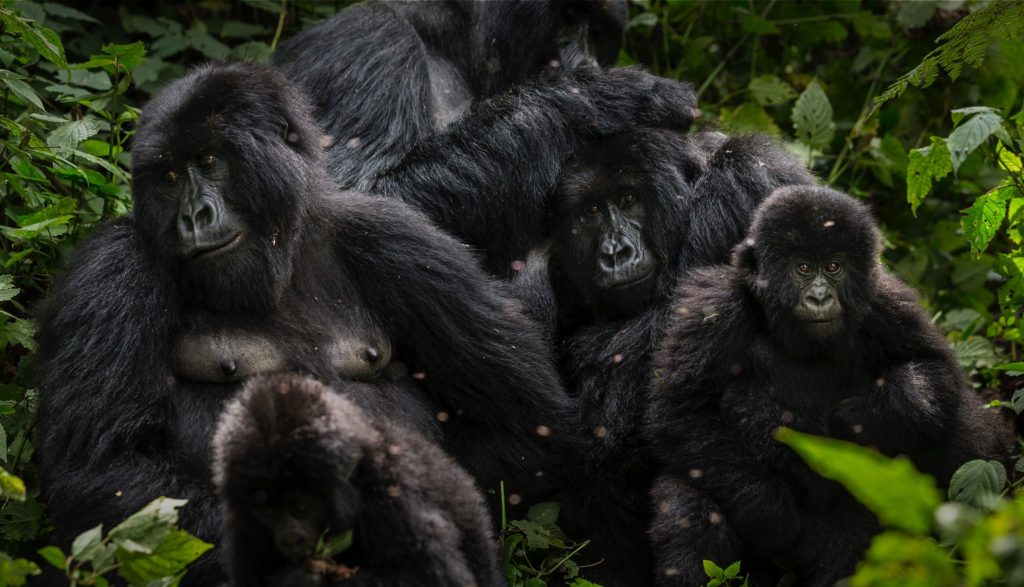|
Getting your Trinity Audio player ready...
|
By Nina Mitch
Despite the Ebola outbreak in the eastern part of the DRC which disrupted the tourism sector, the gorilla population in Virunga National Park, has increased from 117 individuals in 2016 to 147 individuals in 2019. Virunga is Africa’s oldest national park and one of the most biologically diverse areas on the planet, home to the world’s critically endangered mountain gorillas, Located in the Eastern part of the DRC in North Kivu province, near the City of Goma.
In a report released on Wednesday, October 30 in Goma, the Virunga Alliance, which coordinates the activities of the Park, revealed that these gorilla families had 41 births against 11 deaths, keeping a growth rate above 5.7%.

This increase is the result of work done by all the Congolese Institute for Nature Conservation eco-guards, who monitor groups used to human presence, report medical problems, fight to poachers, and protect the area from the presence of armed groups, the report says.
But while this record should promote tourism, the spread of Ebola virus disease in the city of Goma in early August, which received worldwide media coverage, had consequences. The park recorded cancellations of reservations in all directions, before resuming normal operations, after much sensitization of the team in charge of reservations.
The number of mountain gorillas on the border between the DRC, Rwanda, and Uganda is already estimated at more than 1,000 individuals since 2,018. Many remain, however, in the wild, and therefore not accustomed to human presence. The 147 gorilla individuals accustomed to the people give the Virunga National Park added value in terms of tourism.














